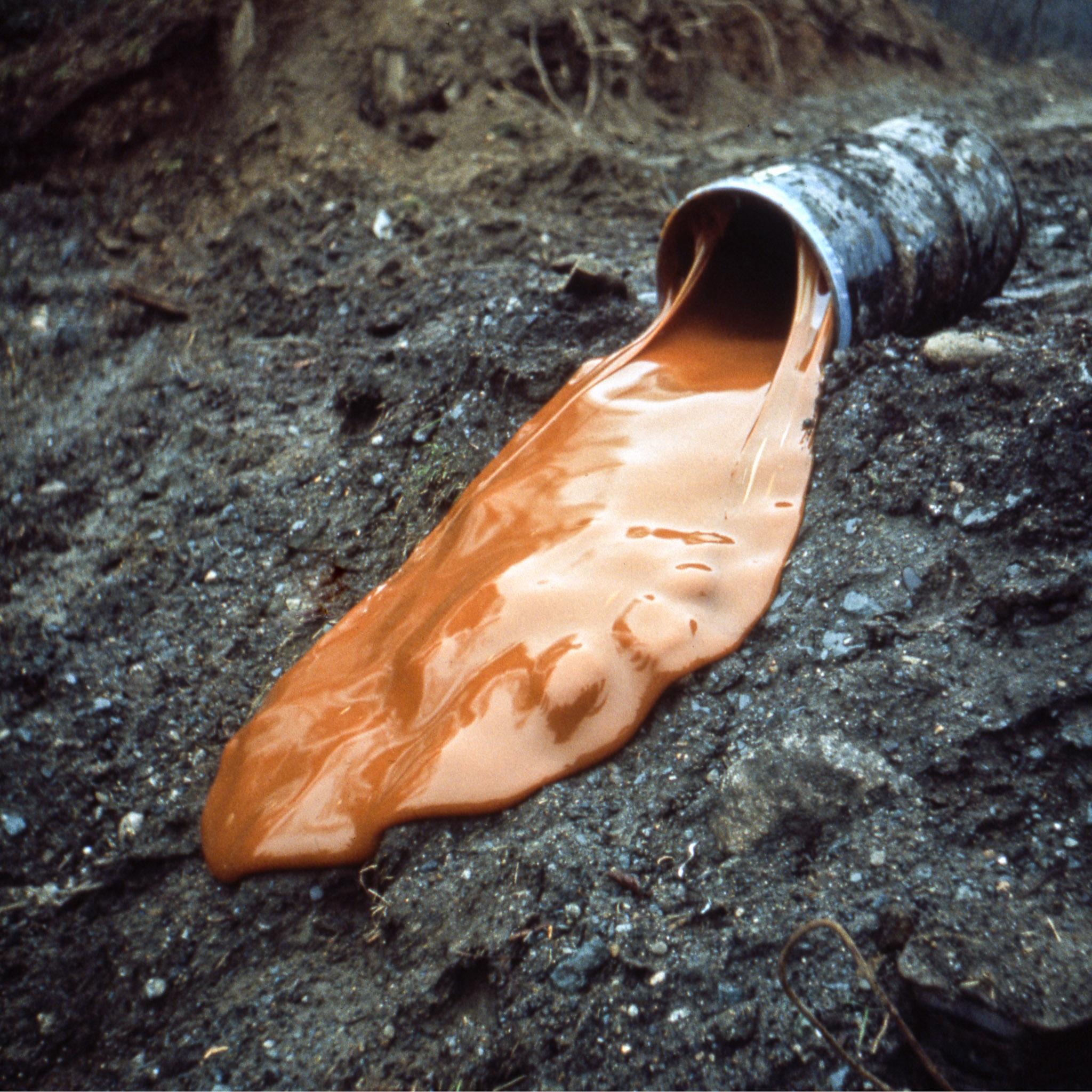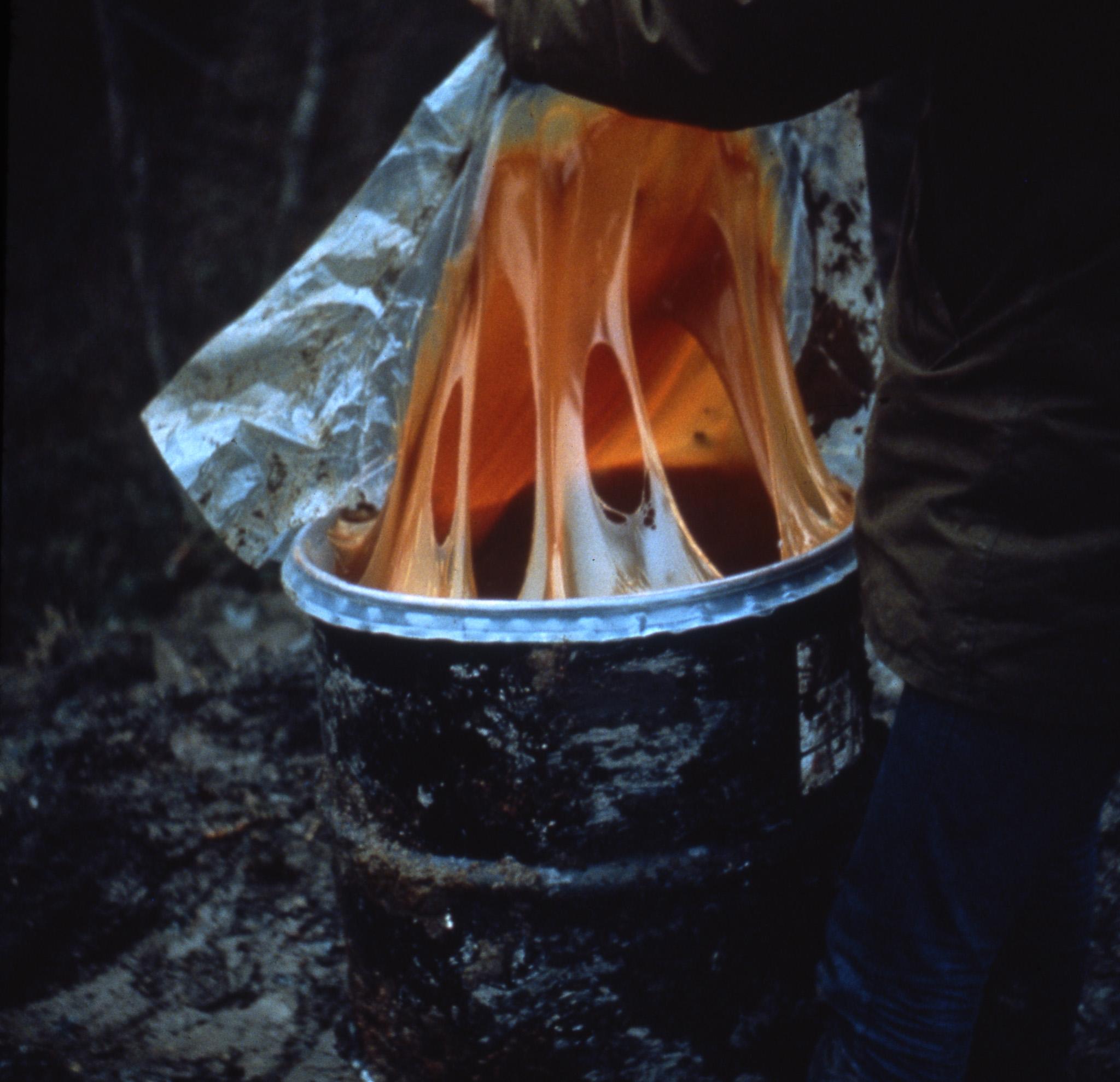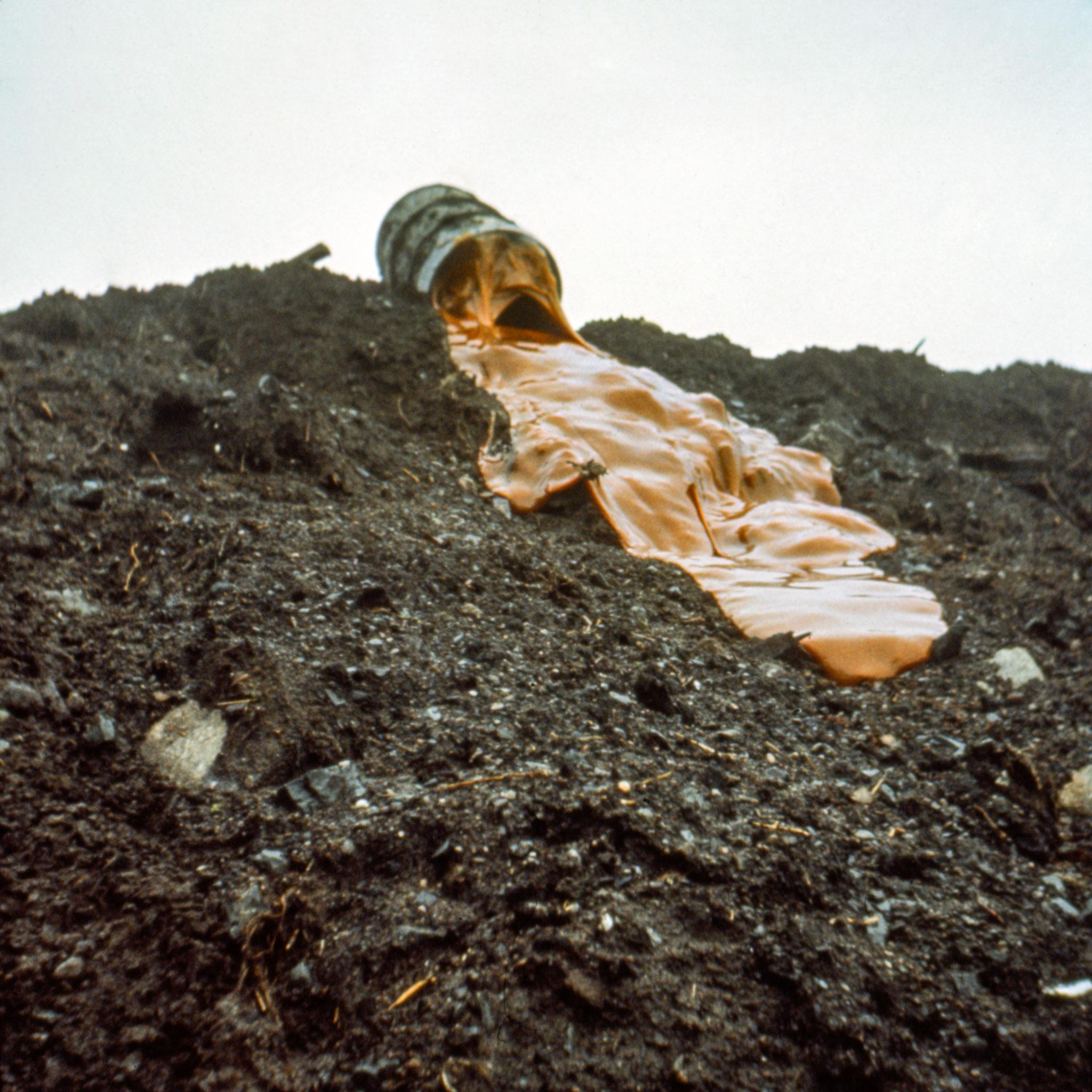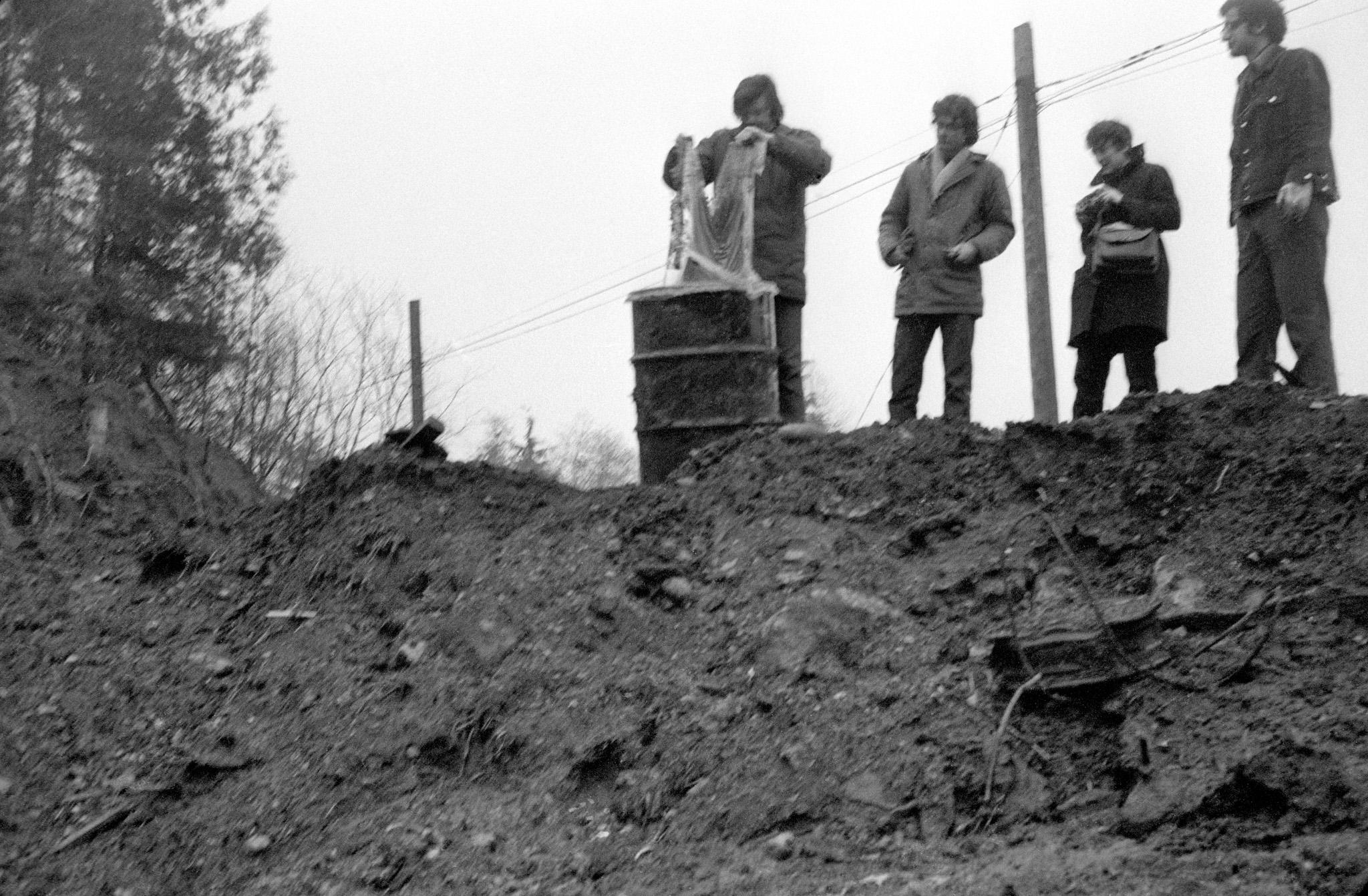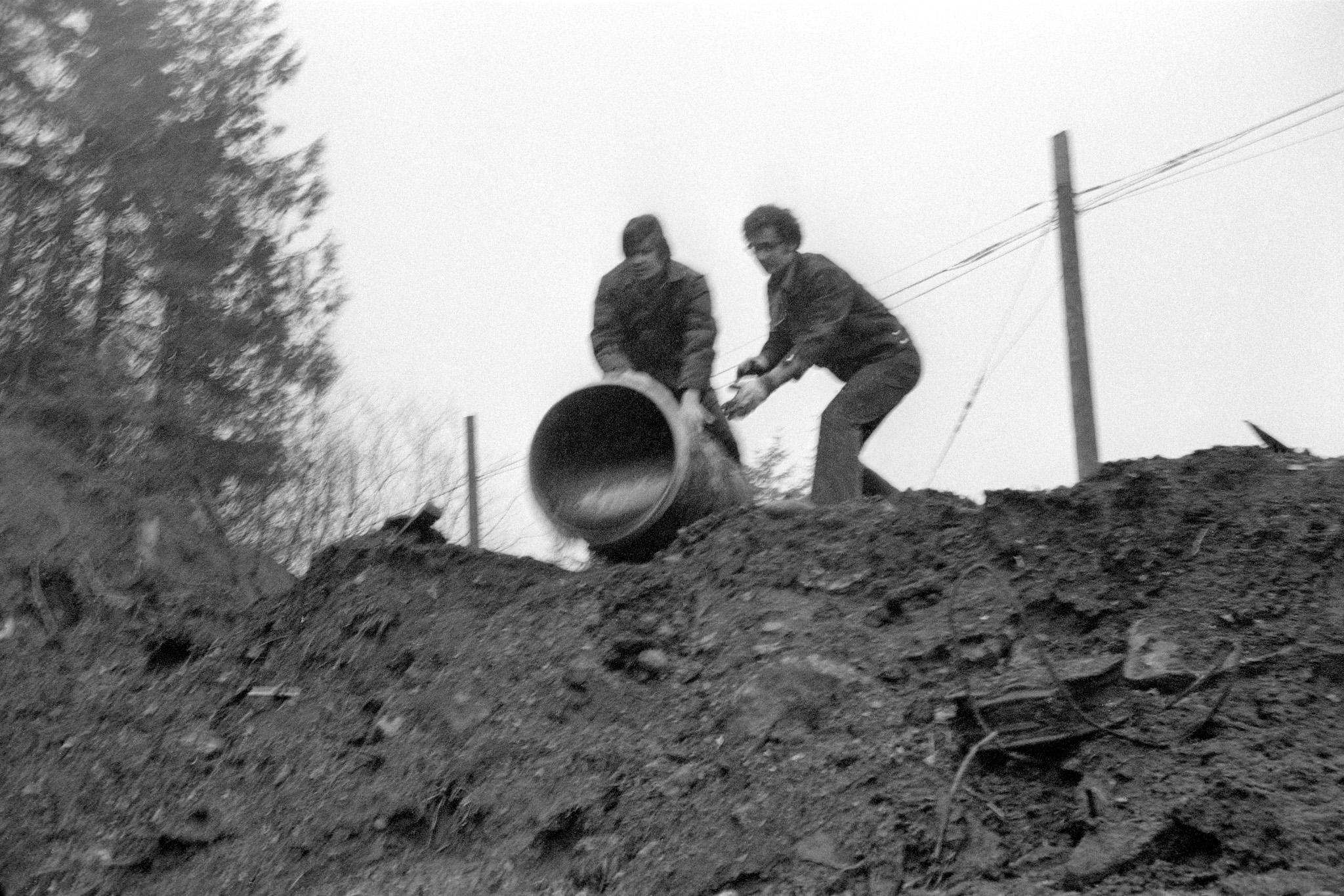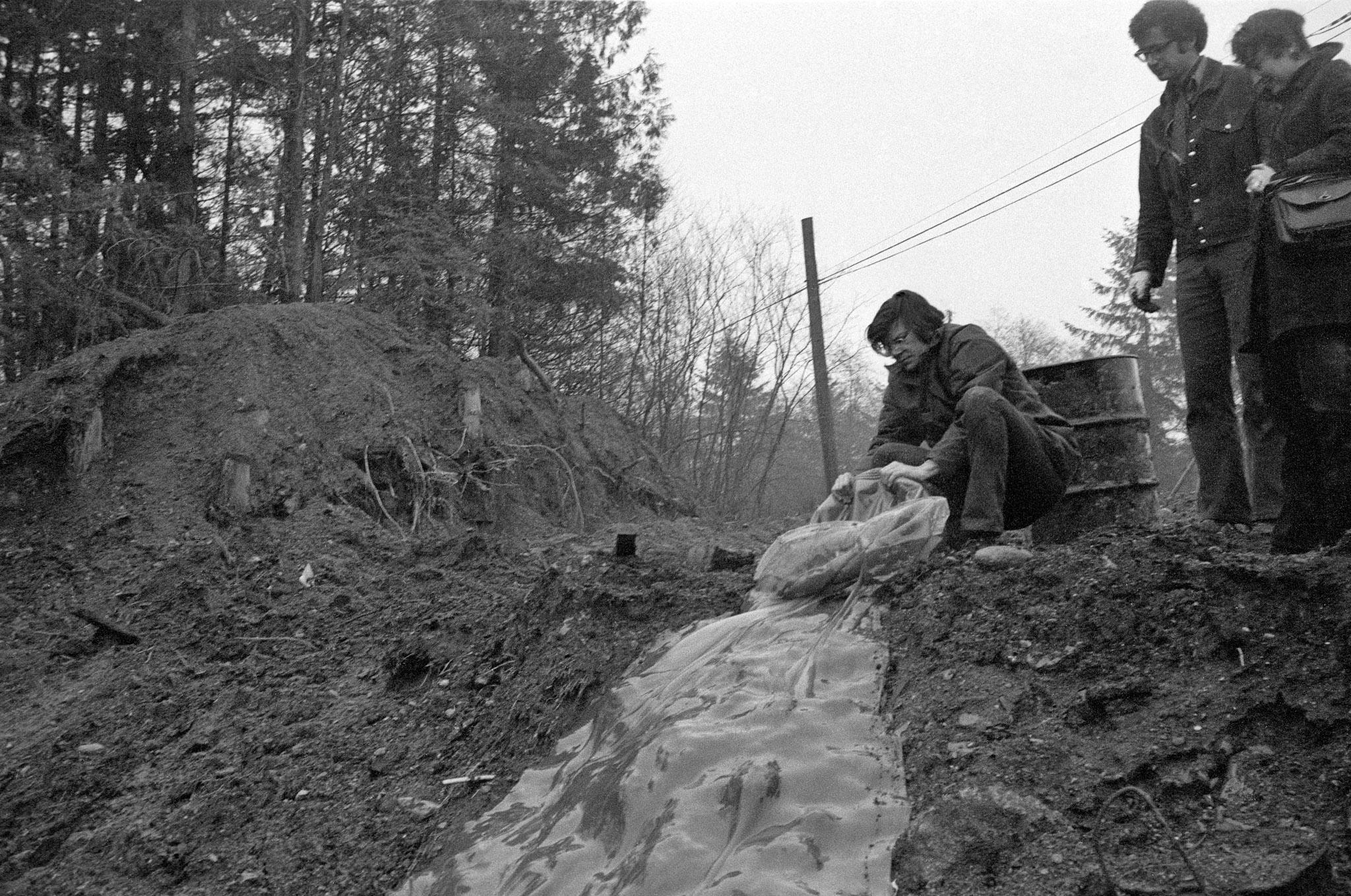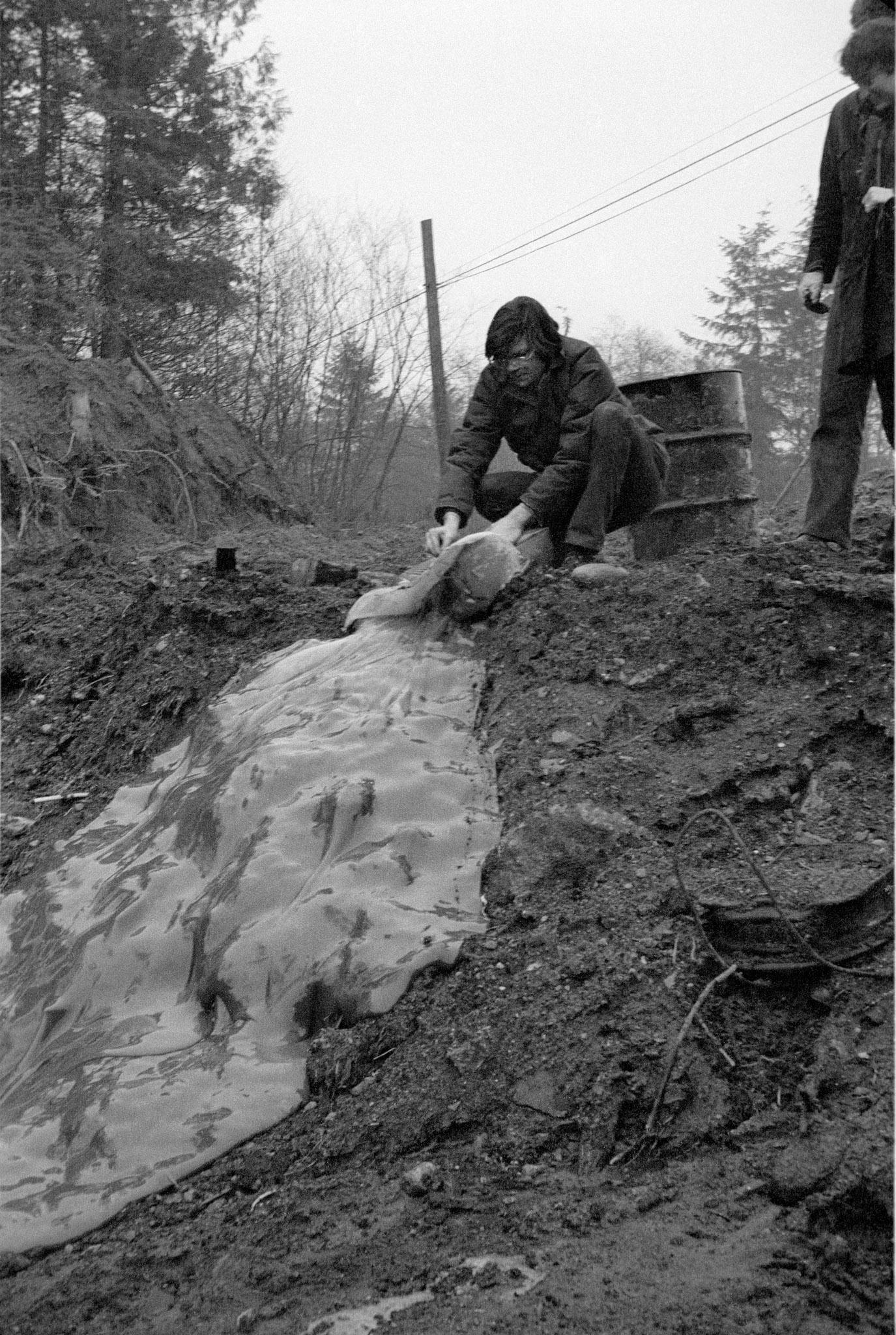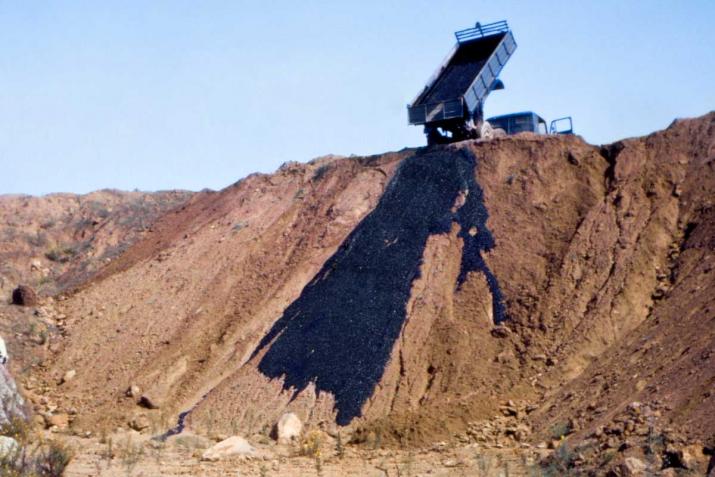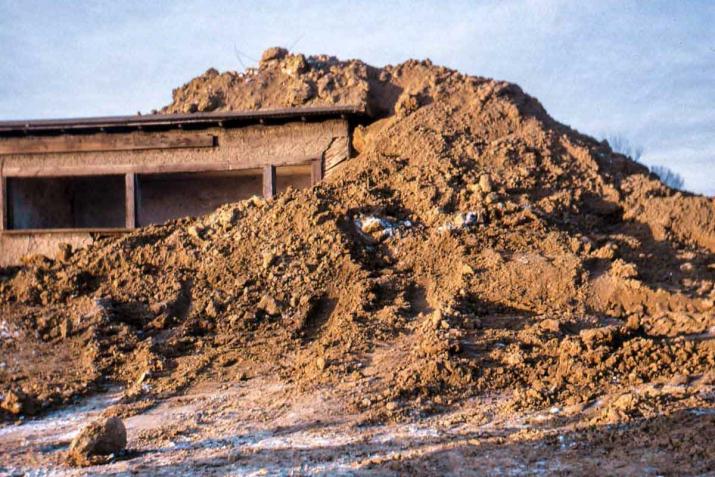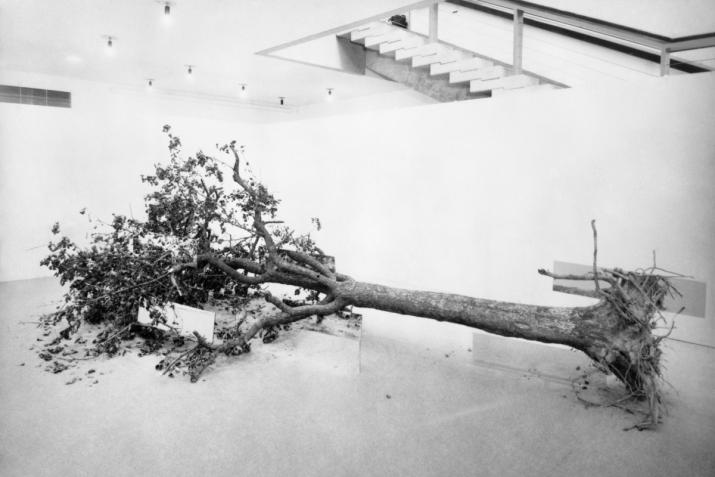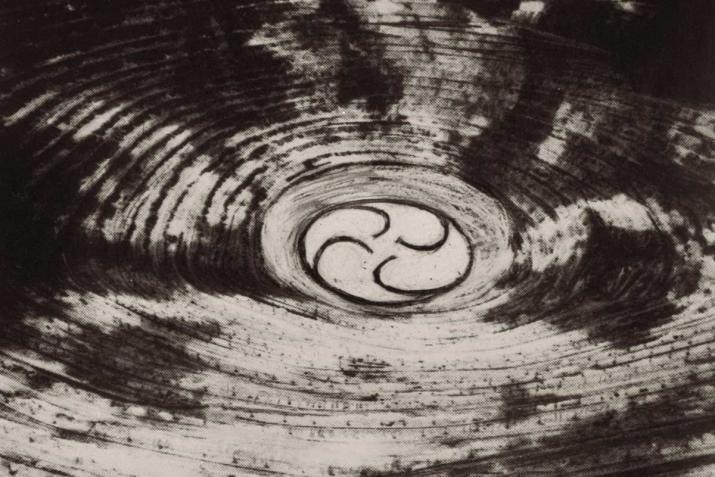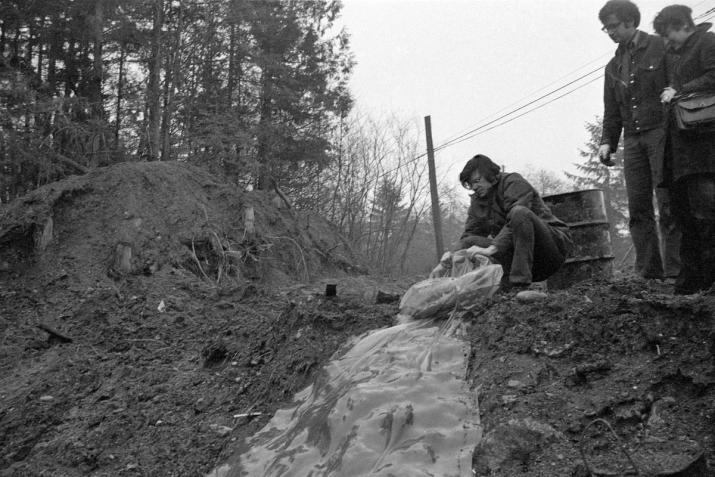
Glue Pour
In 1969 Smithson started working with temporal sculptures made from gravitational flows and pours, thinking through these alluvial ideas in drawings. For Smithson, landscape and its inhabitants were always undergoing change. The first realized flow was Asphalt Rundown (1969, Rome), and the last, Partially Buried Woodshed (1970), took place on the campus of Kent State University in Ohio.
Glue Pour was created for the exhibition 995,000, curated by Lucy Lippard for Vancouver Art Gallery and other sites in the city. It was the second in the “Numbers” series of exhibitions Lippard organized between 1969 and 1973, each titled after the host city’s population. In December 1969 Smithson positioned a large drum of glue at the crest of a hill and tipped the container over, and the orange viscous material followed the contours of the landscape. Photographs of the barrels show the glue was bottle gum, sourced from the Canadian company National Adhesives.
Smithson was invested in a definition of sculpture that was timebound and precarious, that would not claim monumental status and would instead collaborate with entropy. From 1967 he became increasingly interested using photography as a device to communicate his distributed sculptures. Like the other pours, Glue Pour is an event sculpture that exists only in its documentation. This artwork moves though time and space by means of its images.
